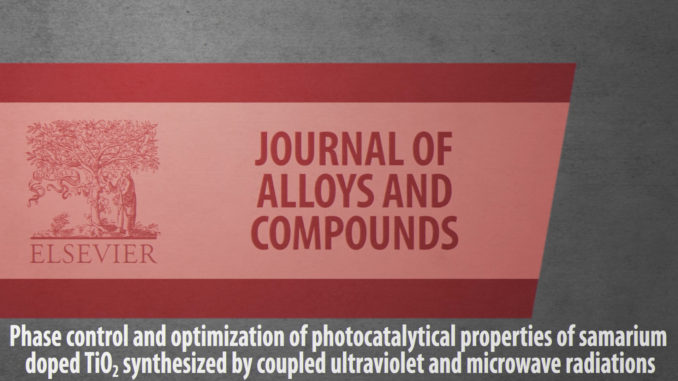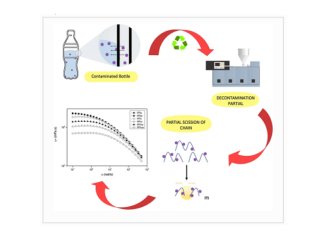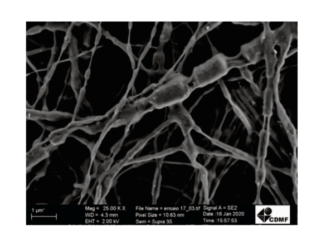
Phase control and optimization of photocatalytical properties of samarium doped TiO2 synthesized by coupled ultraviolet and microwave radiations
Abstract: The scientific community has been looking for strategies to synthesize active catalysts under Ultraviolet_Visible (UV_Vis) light to atrazine (ATZ) degradation. In this study, we applied for the first time the microwave (MW) energy and a Microwave Discharge Electrodeless Lamp (MDEL) as an UV_Vis light source to synthesize photocatalysts. The synergistic use of MW_UV_Vis energies allowed obtaining Sm-doped TiO2 with photoactivity under UV-A light (365 nm) to degrade ATZ. Different characterization analyzes showed that Sm3+ was inserted into the TiO2 lattice and prevented the conversion of anatase into rutile, in addition to giving rise to brookite phase, which increase under MDEL assisted synthesis. Different techniques proved the doping, and especially photoluminescence (PL) showed that electrons are excited to f levels of Sm3+ and can be trapped in the structural defects of the photocatalyst to be consumed later. Moreover, the catalyst synthesized under MDEL irradiation (STiM) showed lower recombination rates and a performance to degrade ATZ of 45% and 15% higher than pristine TiO2 (Ti) and Sm-doped TiO2 (STi), respectively. Photocatalytic degradation mechanism was unveiled by monitoring Desethyl-atrazine (DEAT), Desisopropyl-atrazine (DIAT), and Hydroxy-atrazine (HAT), which are by-products of ATZ. The doped materials showed high efficiency to activate the ATZ hydrolysis reaction, while the water oxidation to generate •OH and converted ATZ to HAT was more pronounced in STiM. We proved through radical probe tests that STiM produces more hydroxyl radicals and that its photoactivity remains even after 4 application cycles.
Author(s): Moreira, A.J.; Coelho, D.; Dias, J.A.; Mascaro, L.H.; Freschi, G.P.G.; Mastelaro, V.R.; Pereira, E.C.
Journal of Alloys and Compounds
Published: 5 April 2022, Volume 905, 164217
DOI: https://doi.org/10.1016/j.jallcom.2022.164217
CDMF
The CDMF, hosted at the Federal University of São Carlos (UFSCar), is one of the Research, Innovation and Dissemination Centers (RIDC) supported by the São Paulo State Research Support Foundation (Fapesp), and also receives investment from the National Council Scientific and Technological Development (CNPq), from the National Institute of Science and Technology of Materials in Nanotechnology (INCTMN).




